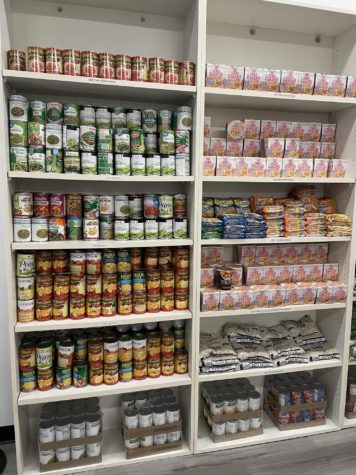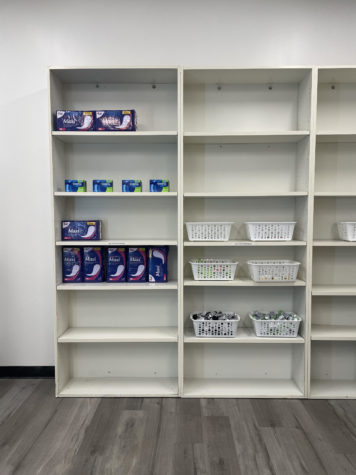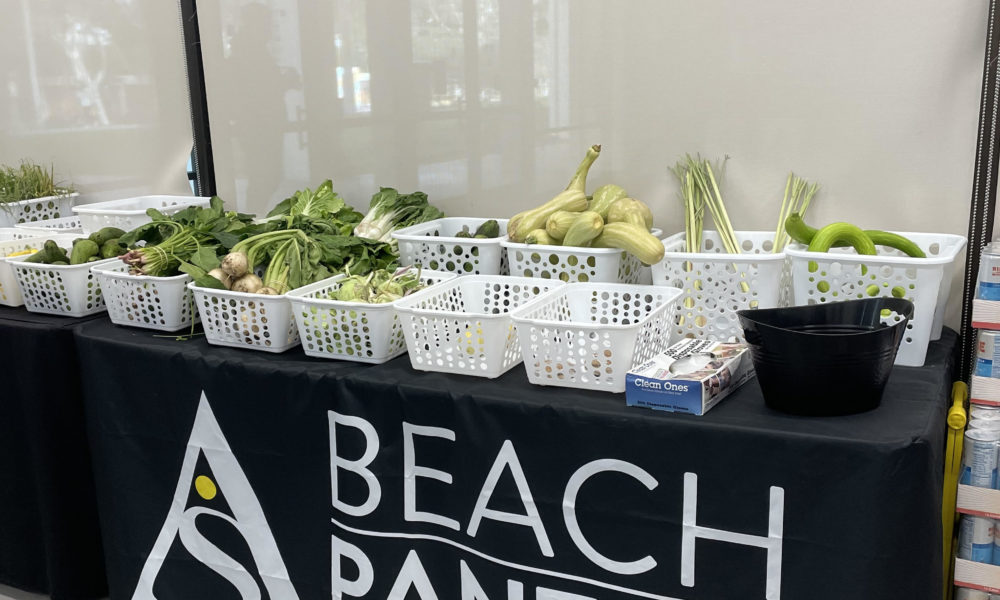By: Aric Pun, Kayla Ronquillo and Sofie Parker
A large number of Long Beach State students continue to rely on food insecurity programs such as Basic Needs to combat hunger, and applications have continued to rapidly increase due to the COVID-19 pandemic.
Kenneth Kelly, the director of CSULB’s Basic Needs program, said that the program’s applications increased from 700 submissions in 2020 to 2,000 submissions this school year.
Kelly said the program was underutilized before the pandemic and now more students than before are opting for on-campus assistance.
“We had about 800 CalFresh applications filed this past October,” he said. “Our application goal for the entire year is 500.”
Rashida Crutchfield, a social work professor at CSULB conducts research detailing the food insecurity and housing crisis among Cal State University students.
“It’s surprising to us as a society because there are presumptions about people who experience homelessness and what you need for college,” Crutchfield said on the CSULB website. “They think that because you’re in college, you’re doing ok.”
As a result, California state legislators recently awarded all CSUs “a recurring $15 million for the Basic Needs Initiative, a component to Graduation Initiative 2025 to help bridge the gap for students,” according to the CSULB website.
CSULB also stated that $1.2 million will be given annually to Beach Pantry, the Basic Needs program, and the Student Emergency Intervention and Wellness program.
ASI President Jesus Gonzalez noticed the issue of food insecurity before his presidency and has since made it his goal to create a more inclusive food program at the Beach for undocumented students and DACA recipients.
As an undocumented student himself, Gonzalez and many others do not qualify for federally-funded food insecurity programs.
“I want to create a program that is not federal and driven by the university,” he said. “This program would allow undocumented students to receive some type of income to reduce food insecurity, and be the first CSU to have that in the [23-campus] system.”
Before the pandemic, college students presented higher rates of food insecurity compared to non-student households by 34%, according to a 2020 Meta study.
Karla P. Shelnutt, a researcher at the University of Florida extensively studies food insecurity among college students and how the pandemic affected them financially.
“In the meantime, students who have been laid off due to the pandemic are adding to their debts,” she said. “The cost of tuition keeps going up, so students are having to choose between paying tuition, paying rent or buying food.”
CSULB CalFresh applicants must meet specific requirements in order to receive up to $250 a month for groceries, according to Beach CalFresh outreach.
Clarissa Peña, a first-year political science major was in the foster care system for over 10 years and applied to the CalFresh program at the beginning of the fall semester, but was denied.
Peña said she received a letter from CalFresh regarding her interview date and time after it took place. She then attempted to call CalFresh customer service multiple times, only to be left on hold for hours, and gave up due to receiving no response.
“You can only handle so much elevator music,” she said.
Later on, Peña decided to visit the Beach CalFresh Outreach in person but had no success.
“I stopped by the CalFresh office to see what I should do, but every time I passed by it was always dark in there. No one’s at the desk,” she said.
Although the CalFresh program has its limitations, CSULB has taken a strong initiative to help support students struggling with food and housing instability by creating the ASI Beach Pantry in fall 2016.

The 2021 Basic Needs COVID-19 impact report stated that over 38% of CSULB students experienced food insecurity, and the ASI Beach Pantry’s pop-up contactless pantry distribution allowed over 200 students to receive meals, fresh produce and snacks.
Since 2016, however, ASI Beach Pantry has provided 43,211 meals to more than 9,000 students, according to the report.
Christina Limon, the Beach Pantry coordinator, said the pantry is open to all students and does not have any requirements.
Limon said in order to access the Beach Pantry’s resources, students use their ID to sign in through the PantrySoft portal that can be done on their computer upon arrival to keep track of its item inventory.
“The Beach Pantry also provides students with healthy food options such as tuna, chicken, rice, canned vegetables and fruits,” she said.
Besides providing food options, the Beach Pantry also has hygiene items available for students.

“We have a toiletry wall, where people can take deodorant, soaps, shampoo, hygiene products,” Limon said. “It’s all donation-based and the students can take from there.”
Limon also said students are allowed to use the pantry up to three times per week and can take up to five items per visit.
Alexia Sandoval, a fourth-year student and Beach Pantry employee, has been using the pantry’s resources since her freshman year.
“After having classes on campus all day and not being able to buy food every single day, the Beach Pantry was a nice resource to rely on,” she said. “I know a lot of other students would probably agree.”




